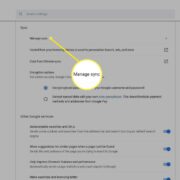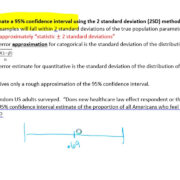In the world of online gaming, understanding your skill level can be as easy as looking at a couple of numbers—more specifically, your kill/death (K/D) ratio. This simple stat represents the number of kills you’ve made compared to the number of times you’ve been defeated by opponents. It’s a widely used indicator of player performance and efficiency in games, and mastering its calculation can offer gamers insight into their progress and areas for improvement. So, whether you’re a seasoned player seeking to refine your skills or a newcomer eager to learn, cracking the code to your K/D ratio is an invaluable tool in your gaming arsenal.

Understanding Your K/D Ratio
Before delving into calculations, it’s essential to grasp what the K/D ratio is and why it matters for gamers. The kill/death ratio is a benchmark in competitive gaming that reflects a player’s proficiency. It’s a straightforward metric—the number of enemies you’ve successfully eliminated versus how many times opponents have bested you. It’s a simple but powerful number that tells a tale of in-game strategy, reaction speed, and tactical acumen. A high K/D ratio usually signals a player that is a force to be reckoned with on the digital battlefield.
Detailed Steps:
- Find your total number of kills.
- Find your total number of deaths.
- Divide the number of kills by the number of deaths.
- The result is your K/D ratio.
Summary:
Calculating your K/D ratio is a quick process that offers immediate feedback about your gaming performance. Understanding your K/D ratio can motivate you to improve your gameplay, while also helping you track your progress over time. Keep in mind that while a higher K/D ratio is typically viewed positively, it doesn’t always tell the full story of a player’s contribution to a team.
Using In-Game Statistics
Many games offer built-in tools that automatically track and display your K/D ratio for you, making it simpler to monitor your performance without doing the calculations yourself. This hands-free approach allows you to focus on playing the game and improving your skills, confident that your stats are being handled by the game.
Detailed Steps:
- Access the main menu of your game.
- Navigate to the statistics or player profile section.
- Locate the K/D ratio displayed among other stats.
Summary:
Leveraging in-game statistics is a convenient method for keeping tabs on your K/D ratio, with the advantage of not needing manual calculations. However, one potential downside is that depending on the game’s design, the stats might not be updated in real-time, causing a slight delay in reflecting your current performance.
Using External Websites and Apps
For gamers looking to delve deeper into their performance analytics, external websites, and mobile apps dedicated to gaming statistics can provide a more comprehensive view. These platforms often offer detailed insights, such as changes in K/D ratio over time and comparisons with other players.
Detailed Steps:
- Search for a reputable gaming stats tracker online.
- Register or log in, if necessary.
- Link your gaming account or manually input your stats.
- Review your K/D ratio along with other detailed analytics.
Summary:
Third-party services can enhance your understanding of your gaming habits with rich data and analytics. They’re particularly useful for players involved in multiple games or those who seek a more granular overview of their stats. However, privacy concerns may arise from sharing account details, and there may be a fee attached to premium features.
Historical Comparison
By regularly tracking your K/D ratio, you create a historical record that can show your progression as a player. This timeline can help identify patterns or periods of improvement and indicate what changes to your strategy or playstyle may have been effective.
Detailed Steps:
- Record your K/D ratio at regular intervals (e.g., daily, weekly).
- Save this information in an easily accessible format, such as a spreadsheet.
- Create a visual chart to easily discern trends over time.
Summary:
Keeping a historical record of your K/D ratio can provide valuable perspective on your development and improvement. Visualizing your progress can serve as encouragement and also pinpoint areas that need attention. As a downside, this method requires consistent tracking and can be time-consuming.
Analyzing Specific Modes and Maps
A K/D ratio can vary widely depending on the game mode and map being played. Some players may excel in certain scenarios, which can be informative for developing strategies and focusing on what works best for you.
Detailed Steps:
- Jot down your K/D ratio for different game modes and maps.
- Compare these to identify where you perform best.
- Adjust your gameplay to focus on these strengths or improve weaknesses.
Summary:
Segmenting your K/D ratio by game mode and map helps tailor your gameplay strategies to your strengths, leading to potentially improved overall performance. The main disadvantage is the extra effort required to track these separate statistics.
Understanding the Limitations
While K/D ratio is a valuable indicator, it has its limitations. It doesn’t account for non-kill related contributions such as supporting team members, completing objectives, or even strategically taking one for the team. Recognizing these factors is crucial to maintaining perspective.
Detailed Steps:
- Reflect on your in-game actions beyond just kills and deaths.
- Consider other metrics such as assists, objective completions, or team support actions.
- Balance your K/D focus with an understanding of overall team strategy.
Summary:
Acknowledging the limitations of K/D ratio ensures you maintain a holistic view of your gaming proficiency, valuing teamwork and strategy as much as individual performance. However, some players might fixate on K/D at the cost of team success or game enjoyment.
Setting Realistic Goals
Improving your K/D ratio should come with setting achievable and realistic goals. This practice helps maintain motivation without setting yourself up for disappointment.
Detailed Steps:
- Assess your current K/D ratio.
- Set a target K/D ratio based on small, incremental improvements.
- Create a plan of action to achieve these improvement steps.
Summary:
Goal-setting for K/D improvement can be a motivating way to track your progress, provided these targets are realistic. Unreasonable expectations could lead to frustration or burnout.
Practice Makes Perfect
As with any skill, improving your K/D ratio comes from practice. Regularly playing the game will help you get better over time, learning the intricacies of the gameplay and honing your reflexes.
Detailed Steps:
- Schedule regular practice sessions, focusing on gameplay mechanics.
- Analyze your performance after each session, looking for improvement points.
- Gradually increase the difficulty or complexity of your practice scenarios.
Summary:
Consistent practice is undoubtedly beneficial for improving your K/D ratio. However, it’s important to avoid burnout and ensure that gaming remains a fun and rewarding pastime.
Learn From Others
Observing and learning from higher-skilled players can boost your own performance. Watching streams, tutorials, or even playing with better players can provide insights into advanced strategies and techniques.
Detailed Steps:
- Find high-level players or streams to watch.
- Take notes on strategies, positioning, and decision-making.
- Implement these lessons into your own gameplay.
Summary:
Learning from others is an excellent way to accelerate your K/D ratio improvement. It’s important, however, to adapt these lessons to your style rather than trying to mimic another player entirely.
Mental and Physical Wellness
Your physical and mental state can dramatically affect your gaming performance. Ensure you’re playing under optimal conditions—being well-rested, hydrated, and focused can make a significant positive impact.
Detailed Steps:
- Take regular breaks during gaming sessions to maintain focus.
- Maintain a healthy lifestyle with proper nutrition and sleep.
- Manage stress levels through relaxation techniques when not gaming.
Summary:
Taking care of your well-being can improve overall performance, including your K/D ratio. Ignoring wellness can lead to decreased reaction times and poor decision-making.
In summary, there are multiple ways to evaluate and improve your K/D ratio from practical calculations to learning from others. Remember, while the K/D ratio is a valuable measure of personal achievement in many games, it’s just one aspect of performance. Considering the complex dynamics of gameplay, it’s important to balance the pursuit of a higher K/D with a broader understanding of strategic team play and personal enjoyment.
Now, let’s respond to some common questions you might have about K/D ratios.
FAQs
Q: What does K/D ratio stand for in gaming?
A: K/D ratio stands for Kill/Death ratio, which is a measure of the number of kills a player has achieved for every death they have in a game.
Q: Is a higher K/D ratio always better?
A: A higher K/D ratio typically indicates that a player is effective at eliminating opponents without dying often. However, it doesn’t capture the player’s contribution to team-based objectives, support roles, or strategic play that don’t involve killing opponents.
Q: Can focusing too much on my K/D ratio negatively impact my gaming experience?
A: Yes, fixating on K/D ratio may lead to a less enjoyable gaming experience or unhealthy gaming habits. It might also hinder teamwork if players prioritize their own K/D ratios over team objectives and success.









